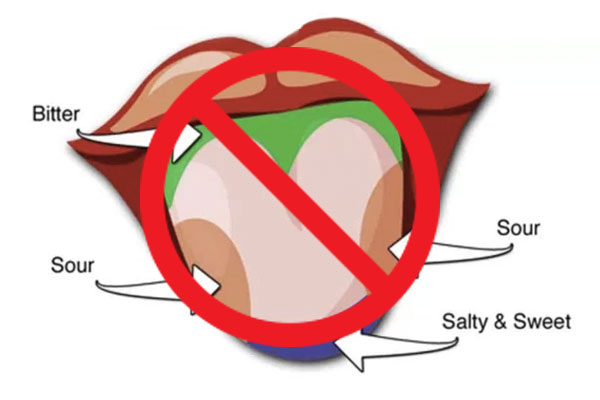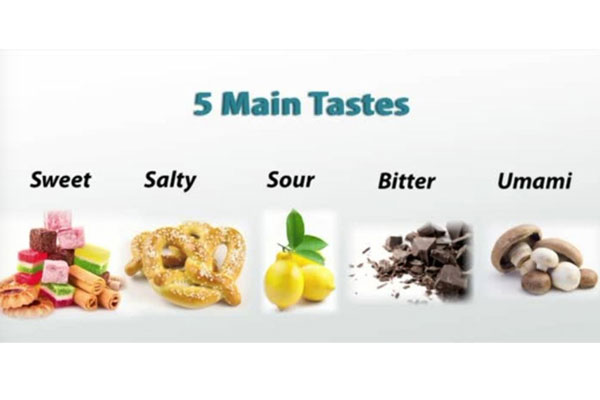With the holidays coming up, we’re all going to be doing a lot of eating, right? I got to thinking how we’re going to taste all this food that we’re going to consume. Have you ever thought about the science behind our taste buds? Did you know that the “tongue map” that shows how different parts of your tongue taste sweet, sour, bitter, and salty is completely wrong, and that it was debunked by scientific research in 1974? Since that tongue diagram has been around since 1901, I guess we were pretty gullible about our tongues for a long time.

The truth is that all parts of our tongue can taste everything, even though certain areas are more sensitive than others, like the sides compared to the middle. The one exception is that the back of the tongue is most sensitve to bitter taste. Why? Apparently this is the body’s defense mechanism so we can taste poisonous or spoiled food and be able to spit it out before we can swallow it! Yes, the human body is awesome!
Even though tasting starts with the tongue, being able to connect the taste with a flavor is also related to our sense of smell. A food’s flavor only happens when it’s combined with your smell—which is why we can’t taste much when we have a cold and our nose is stuffed up. So how do our tongues work? Those little bumps that you have on the surface, called papillae, contain many sensory cells more commonly known as our taste buds. These buds are what sends the signals to our brains that help us identify flavors.

The papillae are concentrated mostly at the tip and at the edges, where the tongue is most sensitive to taste. Most adults have between 2000 and 8000 taste buds in our tongues, but unfortunately we start to lose them as we get older or they shrink, along with their capacity to distinguish flavors. Bummer.
Today there are 5 basic indentifiable tastes—sweet, sour, salty, bitter, and umami, which was discovered by a Japanese chemist named Kikunae Ikeda in the early 1900s. Umami has now become common knowledge among the foodies, who like to show that they know such things, but it took a long time for umami to catch on here. Maybe it’s because umami is hard to define. The word savory and brothy is used most to describe the taste—a long lasting aftertaste that leaves a pleasant coating sensation on the tongue.

Recently researchers have been studying even more distinct tastes that can be isolated and identified. New evidence suggests that the tongue probably has the capacity to taste fat, which scientists have described as the sensation you’d get from “eating oxidized oil.” Ugh! Maybe this is a good thing though, like the body’s ability to warn us to stay away from it, like when something bitter might be poisonous. Eventually fat will probably become the 6th taste.
So what’s the sweetest food you’ve ever tasted? How about the sourest, or saltiest, or bitterest?
Sources: Thanks to U.S. National Library of Medicine for the taste facts.
Images: Cat by Dominique, Tongue Diagram courtesy of Educhien.com, 5 Tastes by Study.com

Leave a Reply